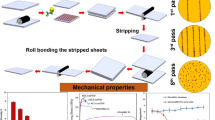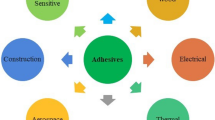Abstract
The early use of electrically conductive adhesives (ECAs) provided an alternative to solder because of their several advantages, such as good electrical conductivity, low cost, extendability to fine pitch of interconnecting material and environmental friendliness. According to previous works, an optimal particle volume fraction became a major objective of many researchers in order to obtain highly conductive ECAs, realizing that the need for transitions from an insulator to a conductor is controlled by the geometric arrangement of particles. In the current study, particle arrangement models of ECAs are developed by establishing the effects of van der Waals’ attraction energy and particle motion, which act as a kind of particle interaction to generate a conducting structure. The methodology is divided into three major parts: the formulation of a particle arrangement technique, and numerical and experimental studies. The formulation of particle arrangement is developed in an epoxy colloidal system. During verification, the particle arrangement model is validated by the theoretical fractal dimension and guided by a morphological study of the experimental assessments. The model was simulated through representative volume elements with the volume fraction factor, which was set in the range of 2–8 vol.%, while electrical conductivity was an observed parameter. The numerical results showed good agreement with the experiments in which the percolation threshold occurred between 4 and 6% of the volume of filler loading.
Similar content being viewed by others
References
Y. Li, and C.P. Wong, in Proceedings of the 4th International IEEE Conference on Polymers and Adhesives in Microelectronics and Photonics, pp. 1–7 (2004).
S.K. Kang, R.S. Rai, and S. Purushothaman, IEEE Trans. Compon. Packag. Manuf. Technol. Part A 21, 18 (1998).
H. Zhao, T. Liang, and B. Liu, Int. J. Adhes. Adhes. pp. 429–433 (2006).
D.I. Tee, M. Mariatti, A. Azizan, C.H. See, and K.F. Chong, Compos. Sci. Technol. 67, 2584 (2007).
I. Mir and D. Kumar, Int. J. Adhes. Adhes. 28, 362 (2008).
Y. Li and C.P. Wong, Mater. Sci. Eng. R 51, 1 (2006).
Y.P. Mamunya, V.V. Davydenko, P. Pissis, and E.V. Lebedev, Eur. Polym. J. 38, 1887 (2002).
A. Boudenne, L. Ibos, M. Fois, J.C. Majesté, and E. Géhin, Compos. Part A 36, 1545 (2005).
C.P. Wong, D.Q. Lu, and Q.K. Tong, in Proceedings of the 3rd International Conference on Adhesive Joining and Coatings Technology in Electronics Manufacturing. Binghamton, New York, pp. 28–30 (1998).
S.K. Anuar, M. Mariatti, A. Azizan, N.C. Mang, and W.T. Tham, J. Mater. Sci. 22, 757 (2011).
H.P. Wu, X.J. Wu, M.Y. Ge, G.O. Zhang, Y.W. Wang, and J.Z. Jiang, Compos. Sci. Technol. pp. 1116–1120 (2007).
G. Suriati, M. Mariatti, and A. Azizan, J. Mater. Sci. 22, 56 (2011).
H.C. Hamaker, Physica A 10, 1058 (1937).
Srinivas Veerapaneni and Mark R. Wiesner, J. Colloid Interface Sci. 177, 45 (1996).
Albert S. Kim and Keith D. Stolzenbach, J. Colloid Interface Sci. 271, 110 (2004).
Author information
Authors and Affiliations
Corresponding author
Rights and permissions
About this article
Cite this article
Zulkarnain, M., Husaini, M., Mariatti, M. et al. Particle Arrangement Design for Predicting the Percolation Threshold of Silver/Epoxy Composite for Electrically Conductive Adhesive Application. J. Electron. Mater. 44, 4525–4532 (2015). https://doi.org/10.1007/s11664-015-3923-1
Received:
Accepted:
Published:
Issue Date:
DOI: https://doi.org/10.1007/s11664-015-3923-1




